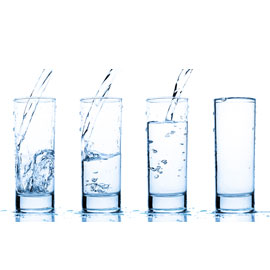Gastric Band Adjustment

One of the leading benefits of Lap Band surgery over other forms of bariatric surgery is that the device is adjustable. This permits Dr. Bagnato to adjust the restriction around the stomach over the course of your weight loss journey, which encourages more sustainable weight loss at a rate that is individually suited to your needs.
Most Lap Band patients get several adjustments to their gastric band during the first year following weight loss surgery, and then fewer adjustments after that as needed.
The First Adjustment
During your surgery, the gastric band is placed around the top portion of your stomach and an access port is placed in the upper chest near your shoulder, just beneath the skin. At this time, your surgeon will not add fluid to your band. This will allow time for you to heal from surgery without dealing with the restrictions or discomfort from a tight band. It also allows the surrounding tissues to become firmer, which will help keep the band in place and prevent future problems.
Although you have not yet had additional fluid added to your band, you will probably still begin to lose weight during the first four to six weeks after surgery. Particularly during the first week after surgery, you will probably have very little interest in food. Pay special attention to this feeling of satiety, or lack of hunger, as this is the sensation that you and your doctor will be working to duplicate later on with band adjustments.
As the weeks progress, you’ll notice that you start to regain your appetite and your weight loss may stop. You’ll probably also notice that you’re able to eat more than you were expecting. Both of these are normal before your first fill.
At four to six weeks after surgery, you are ready for your first “fill,” or adjustment. This is simply the process of injecting a saline solution through the access port and into the band. The more fluid placed into the band through the port, the tighter the band will be around your stomach and the less you’ll be able to eat. The goal is to get enough fluid into the band that you have a sense of satiety between your meals, and also so that you’re able to feel full after eating very little.
Indications that it is time to for a Lap Band fill include:
- Growing hungry between meals
- Ability to eat larger portions
- Decreased rate of weight loss
- Ability to eat foods that are not a recommended part of the post-bariatric diet without discomfort. Examples of this include white bread and fibrous vegetables.
About Lap Band Fills
Getting a fill is part of a clinical consultation. You’ll talk to a member of your medical team about your eating habits. They will want to know if you’re having any difficulties swallowing, how long you can go between meals, and how much you’re able to eat before feeling satisfied. This information will help your doctor decide how much fluid, if any, needs to be added or removed through the access port.
The adjustment itself is a simple and mostly pain-free procedure. While Dr. Bagnato will likely complete your first fill, after that the process is often completed by an experienced nurse practitioner. You will lie on your back and the nurse will find the port with his or her fingers. The skin over the access port will be swabbed with antiseptic and a needle will be inserted into the port and the fluid in the band will be removed, allowing your medical provider to make sure that none of the expected volume is missing for any reason. The fluid will then be put back into the port, along with any additional fluid that has been deemed necessary. After the fluid has been added, the needle will be withdrawn and a bandage may be placed over the injection site.
The only time you may feel any discomfort is when the needle is inserted into your skin. This will feel similar to getting blood drawn.
Immediately after an adjustment, you may notice tightness in your abdomen for the first few days before the band and your stomach resettle. After a few days have passed, you should notice that you can go several hours before feeling hungry. You should also notice that you feel comfortably satisfied after eating a small amount of food. It’s important that you “listen to the band” and stop eating at this point. If you attempt to eat beyond feeling satisfied you may stretch the stomach pouch created by the band, which could hamper your weight loss efforts.
After your first fill, you will likely have regular follow-up appointments with your doctor as needed. Most Lap Band patients undergo about five or more adjustments during the first year after surgery. The rate of your weight loss and your eating habits will determine your individual fill schedule.